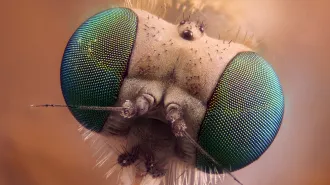Encountering an unexpected Pluto and life’s complexity
By Eva Emerson
- More than 2 years ago

Milius describes how genetic tools, which initially led scientists to misconstrue connections, are now beginning to clarify relationships in the panoply of eukaryotic life-forms. It’s a fascinating tale of how peering deep into the history of evolution has revealed unexpected richness and complexity, even in the supposedly simple single-celled organisms.
New tools can afford better views not only of the deep past but also the distant present. Just as genetic analyses are revealing details of life’s long history, the New Horizons probe is bringing the fuzzy surface of the faraway dwarf planet Pluto into focus. Science News wrote about New Horizons (also nearly 10 years in transit) a few issues ago (SN: 6/27/15, p. 16), and now reports on the actual flyby of Pluto. The event, which took place while we prepared this issue of the magazine, kept the entire staff rapt.
Christopher Crockett was on the scene July 12–15 at the Applied Physics Laboratory in Laurel, Md., along with about 200 other reporters from around the world. His story began as a series of brief, real-time posts on the Science News website while data streamed back from Pluto to the New Horizons team. It was science news at its best. Instead of the dead icy orb people expected, New Horizons revealed a dynamic and varied world unlike any other. Once again, better tools revealed something new, forcing scientists to recast what they thought they knew. It was historic.
At the heart of the excitement in the newsroom was the sense of extending humankind’s ability to see more of what’s out there, from the details of the surface of a dwarf planet to the incredible diversity of life on Earth. Perhaps even more thrilling was the sense that there are more puzzles to discover, just waiting for the right tools to illuminate them.







